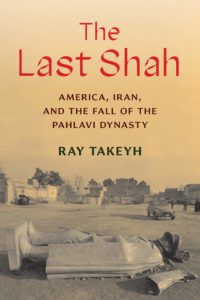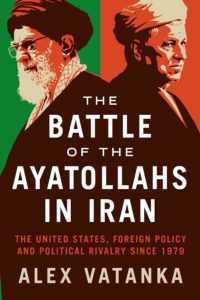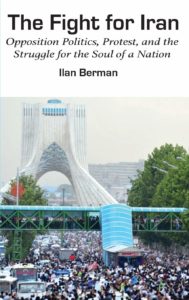Take an Iranian to the beach. Take several. Throw in the CIA, State Department, Presidents from FDR to Carter, and shake well. Swallow and digest. These three books will remind you how Shah Reza Pahlavi lost the Peacock Throne (it was a much longer and more interesting process than you might think), how the soap opera of mullahs and seminarians took advantage of the ultimate weakness of the Shah and each other, and enlighten you with the undercurrents of dissent in Iran today. And what America understood, and what it missed, in the process. Read them in order.
 Start with The Last Shah: America, Iran, and the Fall of the Pahlavi Dynasty by Ray Takeyh of the Council on Foreign Relations. A former State Department official and an Iranian American, Takeyh starts with Reza Shah’s attempt to modernize the country prior to World War II. The arrangement was oil for machinery and technology from Germany (which should sound familiar to post-Shah observers), and a desire to emulate the rapid modernization of Germany in the 1930s. Not quick enough to expel the Nazis, Reza Shah was exiled in 1941 by the British in favor of his 21-year-old son, Crown Prince Mohammad Reza Pahlavi. After WWII, the crises of oil nationalization and Azerbaijan, the departure of the British from the region, and the entry of the United States set the stage. The young Shah was a modernizer as well.
Start with The Last Shah: America, Iran, and the Fall of the Pahlavi Dynasty by Ray Takeyh of the Council on Foreign Relations. A former State Department official and an Iranian American, Takeyh starts with Reza Shah’s attempt to modernize the country prior to World War II. The arrangement was oil for machinery and technology from Germany (which should sound familiar to post-Shah observers), and a desire to emulate the rapid modernization of Germany in the 1930s. Not quick enough to expel the Nazis, Reza Shah was exiled in 1941 by the British in favor of his 21-year-old son, Crown Prince Mohammad Reza Pahlavi. After WWII, the crises of oil nationalization and Azerbaijan, the departure of the British from the region, and the entry of the United States set the stage. The young Shah was a modernizer as well.
And therein lies the tale.
Takeyh expertly explores – with some sympathy for just about everyone except for the Ayatollah Khomeini – the many threads and personalities in Iran’s society over time – mullahs, landlords, bazaar shopkeepers and traders, teachers, student, peasant farmers, the army, and the elites. Communists, socialists, reformers, and traditionalists. They all interacted, made alliances, broke them, and made others. The mullahs had no trouble talking to the communists, the army, and the mullahs, and so on. Interestingly, the CIA comes out looking pretty good, both in the Mosaddeq period (noting that there were two coups, and the CIA was only diffidently engaged in the first, failed one) and in the Carter period. Carter looks stronger than he is often portrayed. Truman and Eisenhower were the last presidents to decline U.S. aid to the Shah on the grounds that there was plenty of revenue available to Tehran if it would solve its own oil nationalization problem – and that American taxpayers would disapprove.
Even the Shah has some good years. His reforms of the 1960s and ‘70s actually did change the dynamic in society, particularly in the area of land reform, and the 1970s were generally economically and socially positive. But the Shah’s increasing interest in dictatorship rather than constitutional rule soured his relations with several streams of Iranian society, while rapid modernization strained relations among his traditional support groups. His increasingly fearful isolation, leading to the rise of the SAVAK as his protector rather than the army of the state, should be seen as a model for the rise of the IRGC. The ruthless Khomeini was left as the only force able to mobilize the people. Takeyh writes, “No one was willing to die for the Shah.”
But where the Shah was unwilling to kill Iranian citizens, Khomeini had no such scruples, nor do his successors.
 To better understand the soap opera that was Iran’s religious politics, dip into The Battle of the Ayatollahs in Iran by Alex Vatanka, who should have had a better English-language editor. Born in Tehran, his family fled, and he spent his youth in Denmark. Educated later in England, he moved to the United States in 2006. Vatanka concentrates on the relationship between Akbar Hashemi Rafsanjani and Ayatollah Ali Khamenei, but the two – alternately partners and rivals – are central to a swirling and ever-changing cast of Iranians who believed the revolution a) could be tamed and b) was getting started in Iran, but had larger, worldwide goals.
To better understand the soap opera that was Iran’s religious politics, dip into The Battle of the Ayatollahs in Iran by Alex Vatanka, who should have had a better English-language editor. Born in Tehran, his family fled, and he spent his youth in Denmark. Educated later in England, he moved to the United States in 2006. Vatanka concentrates on the relationship between Akbar Hashemi Rafsanjani and Ayatollah Ali Khamenei, but the two – alternately partners and rivals – are central to a swirling and ever-changing cast of Iranians who believed the revolution a) could be tamed and b) was getting started in Iran, but had larger, worldwide goals.
The bloody years of 1979-81 ultimately produced an Iranian regime that was closed, radical, and single-minded. Khomeini renounced whatever liberalism he evinced in Paris during his exile. “I said many things in Paris. But I do not consider myself bound by them.” Or anything else. For those who believed Tehran wanted relations with the U.S. and wanted to find a way out of the hostage crisis, the chants of pro-Khomeini demonstrators are instructive. “War, war until the Removal of Intrigue from the Whole World.” And “The road to Jerusalem goes through Karbala (in Iraq).”
It was all there for the U.S. to see and to respond to. Yet, some Americans – including the Obama and (apparently) the Biden administration, through the JCPOA and even now – believe the Islamic Republic can be dealt with. Iranian cheating before and during the JCPOA, the financial and military support for Hezbollah and Hamas (including in the 2021 Hamas rocket war on Israel), the murderous Iranian proxy army warfare through the Sunni center of Syria, the Shiite militias of Iraq, the purges of the Iranian Army that killed thousands of officers, the political assassinations, and the religious suffocation of the Iranian people should have told us something.
But no.
 So, you really need The Fight for Iran: Opposition Politics, Protest, and the Struggle for the Soul of a Nation by Ilan Berman of the American Foreign Policy Council. By itself, the book is odd. A compendium of Berman’s published columns from 2019 and 2020 defining Iranian opposition groups and their relations with the United States. Or their desired relations with the United States.
So, you really need The Fight for Iran: Opposition Politics, Protest, and the Struggle for the Soul of a Nation by Ilan Berman of the American Foreign Policy Council. By itself, the book is odd. A compendium of Berman’s published columns from 2019 and 2020 defining Iranian opposition groups and their relations with the United States. Or their desired relations with the United States.
I was prepared to dislike it. But I can’t. There is too much important material here – much of it lost in the anti-Trump whirlwind of 2016-2020. In fact, this might be the most important of the three because while history is interesting, Berman’s dissidents plan to be the future.
Berman – a terrific writer – brings Takeyh up to date. As The Last Shah makes clear that there are diverse streams of Iranians wanting diverse political and social opportunities, so The Fight for Iran tells the same tale in our own decade. It is a reminder that the people of Iran have been living with upheaval for a very long time. Berman starts with the Trump Administration’s rejection of the 2015 JCPOA (the “Iran deal”), which was coupled with his intention NOT to overthrow the current Islamic government. That was a disappointment to many people – particularly inside Iran and particularly in light of the disintegration of the Iranian economy in 2019 and into the pandemic period of 2020.
This is a roadmap. Former Crown Prince Reza Pahlavi, the (reformed?) Mujahedin e-Khalq (MeK) with its violent background, women, particularly Masih Alinejad a former reporter and the women of anti-hijab campaign, and civil society groups and other organizations are all out there, popping up and dropping down. The chapter on ethnic divisions is essential reading – what is the role of the nearly 27 million Azerbaijanis and 8 million Kurds and 5 million Arabs among 42 million Persians?
In the civil society chapter, Berman writes:
According to [activist Marian Memarsadeghi] Iran’s population today is very similar to the captive audience that languished behind the Iron Curtain. It… understands full well the deformities of the current regime, chafes under its increasingly blatant excesses, and has given up hope that any meaningful reform of the existing system is possible. But it is also one that is demoralized by a lack of attention from the outside world and outgunned by the increasingly repressive practices of the ruling regime.
Time does march on, not always as Berman would have it. The chapter on then IRGC posits that the Revolutionary Guard might be the catalyst for overthrowing the regime and notes that some observers thought the death of Soleimani would been the end of the Guard. But no.
At heart, all three books are about America as much as about Iran. Iranians are always asserting their need to be a major power while waiting for someone to rescue them from their internal contradictions. But it is unlikely that anyone will or can. The Americans want to be helpful, even when American “help” makes things worse, as it sometimes did.
Takeyh limns relations between the Shah and Presidents Truman through Carter. The earlier presidents were unwilling to support the Shah’s desire for a bigger and stronger military. Kennedy was a true believer in the power of technology and education coupled with good governance to produce healthy, forward-looking countries in what was then called the Third World [see The Kennedys in the World: How Jack, Bobby, and Ted Remade America’s Empire by historian Lawrence J. Haas, reviewed in inFOCUS Quarterly, Spring 2021]. Nixon and Ford moved closer to the Shah’s view. Carter was surprisingly unhappy with the rise of the mullahs.
Some of Berman’s dissident groups want the United States to overthrow the mullahs and others want Washington to convene a “congress” of change-makers. Some want the U.S. to strangle the economy and others want it to strangle the government. None want a return to the JCPOA or a revival of the money spigot to the mullahs.
What does America want? What we always want – for people to have a calm, safe, prosperous life, with a government that stays inside its boundaries and doesn’t threaten other countries or people of other religions. Nice, idealistic American goals for others and for ourselves. But after the hideous experiences of countries where the U.S. overthrew leaders – Iraq, Libya, Egypt – and waffling on war crimes in Syria – the government doesn’t have any good plans.
So, Berman has prescriptions:
Make human rights a real issue
Reach out to the Iranian people through America’s Radio Liberty and Radio Farda, both of which need significant upgrading, and
Encourage collaboration among opposition groups.
Sigh and reapply your sunscreen. The Biden administration is currently looking for a “peace process” with Iran that involves restoration of the JCPOA and the money. If he succeeds, the dissidents will be further crushed, the region will be in further upheaval with Iranian gains in the Red Sea, North Africa and in countries surrounding Israel. But you will know more.
Shoshana Bryen is Senior Director of The Jewish Policy Center and Editor, inFOCUS Quarterly.





